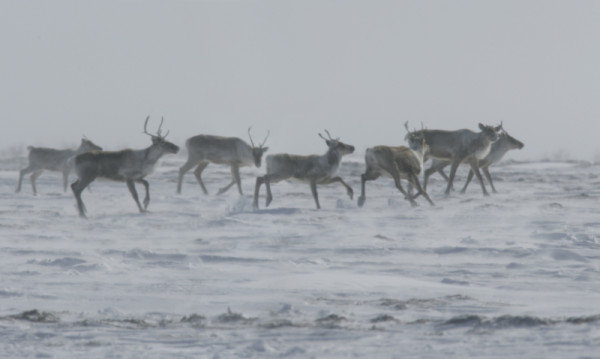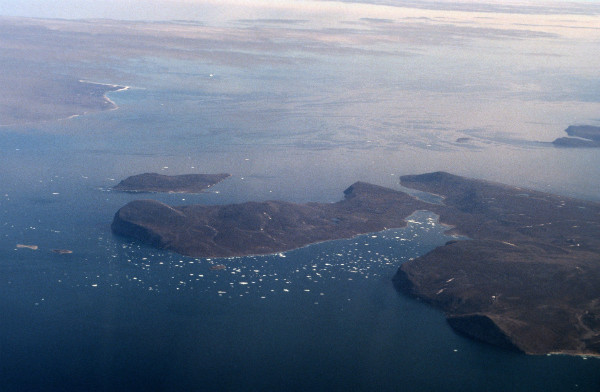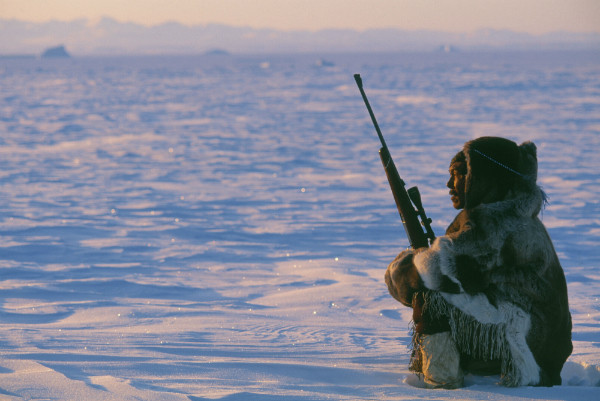Baffin Island Caribou hunting ban: short term pain for long term gain
On January 1st 2015, the Government of Nunavut implemented a temporary ban on caribou hunting across Baffin Island. This marks a first for the area’s unique population of barren-ground caribou (Rangifer tarandus groenlandicus) that have declined, mainly owing to natural cyclical rhythms, as much as 90 percent over the past 20 years. Imposing a moratorium on hunting at the bottom of the natural population cycle, is a smart decision that WWF supports.
Nunavut’s Environment Minister Johnny Mike recognizes just how high the stakes are, describing the situation as “urgent” in a December 20th news release, and saying elsewhere that “if we do not stop hunting now, the effects will be permanent. There will be no more caribou on Baffin Island, and Inuit culture will be even more impacted.”
His statement was supported by a 2012 aerial survey that found between 3,500 and 6,000 of the ungulates on the northern island, down from up to 330,000 in the 1990s. The Government of Nunavut says in a submission on the issue that “[c]aribou numbers increase until they surpass the carrying capacity of the environment, and then they decline precipitously to low numbers until the range conditions improve, at which time the cycle begins again.” Reports show that this is indeed the case, with low numbers in the Northwest Territories in the 1920s, followed by a big increase in the 1940’s, and additional highs and lows from the 1950’s to 2000’s.
In addition to their natural cyclical population fluctuations, caribou across the Arctic are facing multiple pressures to their long-term survival.
Scientists are also concerned about the impact climate change is having on the Baffin herd’s ability to find lichen, their main source of food. Warmer temperatures and more precipitation can cause more frequent covering of lichen and other food by thick layers of ice and snow that caribou can’t break through with their hooves. And when you combine this with increased industrial development in the north and the pressures of harvesting, it’s clear that sweeping measures are necessary to help protect the future of the species.
All the more so when you factor in the enormous food security and cultural challenge the population decline present Nunavummiut, the Inuktitut word for people from Nunavut. Caribou are a very important resource for both food and clothing on Baffin Island, even though only a handful of people have been able to hunt the species for meaningful sustenance over the past few years.
In addition to the moratorium on hunting, what is crucially needed is stronger protection of calving and post-calving areas through land-use planning to protect the most critical caribou habitat in Nunavut and across the Arctic. We’ve previously pointed out that the latest draft of the Nunavut Land Use Plan does not adequately protect the places that are critical for the species survival. Strengthening the Land Use Plan and developing a long-term caribou management strategy is essential to ensuring that this iconic species remains a part of Canada’s incredible northern landscape. Most crucial, of course, is the community of nations coming to an effective agreement to drastically lower greenhouse gas emissions. Climate change has not been caused by Northerners and yet, they will suffer disproportionately form its effects.
The hunting ban is a step in the right direction and a signal that the Nunavut Government isn’t willing to gamble with its natural resources. We hope to see the same leadership in land-use planning processes. Most importantly, we hope that countries, including Canada, will show leadership next December in Paris and reach a meaningful agreement to substantially lower greenhouse gas emissions. If all of these pressures on the Arctic landscape are dealt with, northern communities and the wildlife they depend on will thrive.




